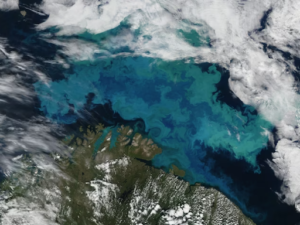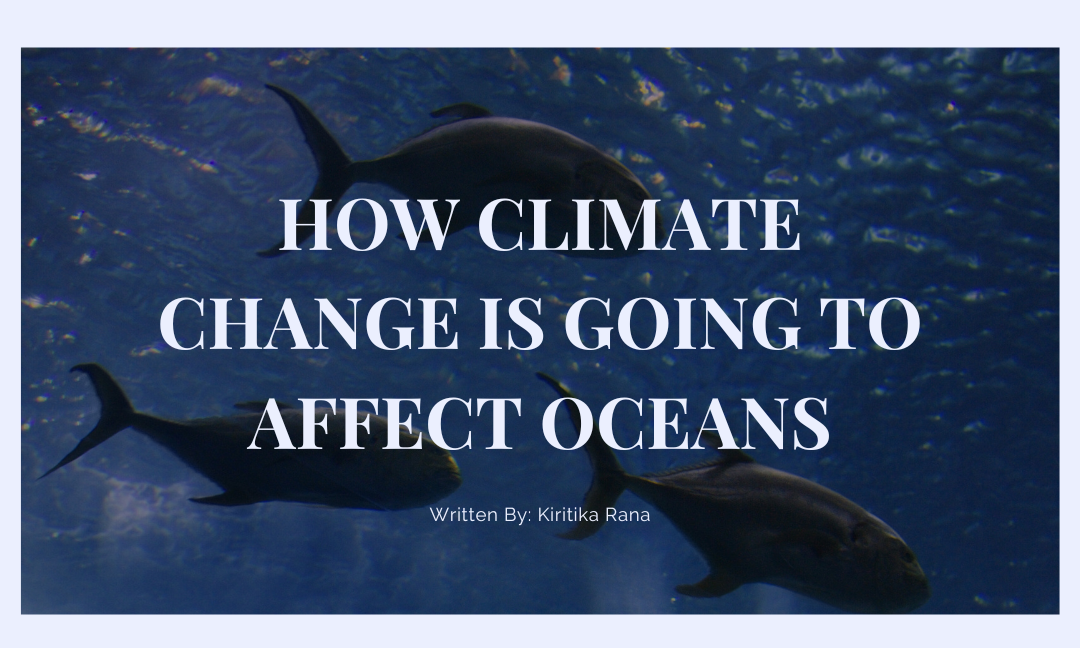Written by: Betty
Edited by: Kiritika Rana
Designed by: Eshika Hiremath
Published by: Maryam Khan
According to satellites, the oceans are becoming increasingly blue as the climate heats up. The study published in the magazine Natura, models that oceans will experience three stages of colour change – green, blue, and gray – by 2100 if global warming stays at its current pace. How is climate change shifting the colours of oceans?  What do the colours represent, and how does it affect food sustainability?
What do the colours represent, and how does it affect food sustainability?
How do oceans get their colours?
“Sunlight penetrates 600 ft into the water surface, and everything below is enshrined in the dark.” The sunlit water isn’t able to absorb blue, and reflects off the surface, so blue is the colour of oceans that we see. Oceans are dominated by phytoplankton – microorganisms that contain chlorophyll. They thrive in warm water, in the zones that are 30ft below the surface, determining that the colour of oceans are in fact green. At first, phytoplanktons will deluge oceans due to the heating up of seawater, but global warming causes torrents in the oceans more often than decades ago, the water will be segregated by temperature and become more stratified. Many planktons die out, some will migrate, or adapt. The reduction of green vegetation boosts the reflectivity of blue colour.
What effects does it have on food sustainability?
The most eminent effect is marine food webs. “Phytoplankton are the base of the marine food web. Everything in the ocean requires phytoplankton to exist,” Dutkiewicz told National Geographic in 2019. “The impact will be felt all the way up the food chain.” Without phytoplanktons, the marine food web would be corrupted from the bottom (microorganisms, small fishes, etc). Another more serious effect is that phytoplanktons absorb 70% of greenhouse emissions on Earth. If the number or the species of phytoplanktons reduces, it can result in accelerating global warming. The consequences of that include extreme weather – storms, drought, heat, flood, squalls, tsunamis and heavy snow -, desertification, and deforestation. The area of arable lands shrinks.
Conclusion
Phytoplankton are the base of the marine food web, and absorb 70% of greenhouse gasses, turning them into oxygen to feed marine organisms. It provides the three essential things for life: air, food and water. The pause of this coming havoc starts by the small effort everyone makes.

